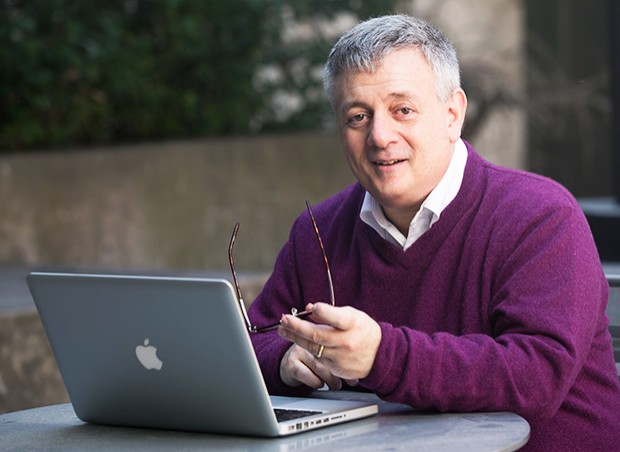A massive move to online instruction provides a challenge and an opportunity for Concordia’s educational technology students

In the week leading up to the shuttering of all of Quebec’s educational institutions in mid-March, Saul Carliner and his colleagues sensed a crisis looming. But they also saw an opportunity to put their training and expertise — and that of their students — to work.
Carliner, a professor in Concordia’s Department of Education, and associate professor Ann-Louise Davidson both came up with a similar idea. They approached Sandra Gabriele, vice-provost of Innovation in Teaching and Learning, and Rob Cassidy, director of the Centre for Teaching and Learning (CTL), with an offer. The proposal was to mobilize their students and themselves however was best needed to help faculty adapt to the new reality of full-time online instruction. The offer was gratefully accepted, Carliner says.
 Saul Carliner
Saul Carliner
Help where and how it’s needed
During that first weekend of lockdown — from Friday, March 13 to Sunday, March 15 — the two researchers recruited volunteers from the master’s, PhD and graduate diploma students in the Educational Technology and Instructional Technology programs to prepare documentation requested by the CTL. The centre needed information about using technology tools like Moodle and Zoom to teach, in order to post it in a special section for faculty on Concordia’s microsite about its COVID-19 response. Within three hours of the first call, close to two dozen students had volunteered and within a day, there were nearly 40.
Carliner and Davidson organized two teams of students to work on different pieces of documentation and gave them 48 hours to complete their drafts. To Carliner and Davidson’s pleasant surprise, they found that students had completed them by the following morning.
“There was a specific emphasis in the online documentation on pedagogy,” Carliner explains. “It was more than just ‘press this button or turn on this switch in the software.’ There was a pedagogical issue: ‘how can I address a teaching challenge with this program?’”
As the university prepared for the first week of classes online, Cassidy asked Carliner and Davidson if they could organize another effort: recruiting students to assist Concordia staff on the helpline, focusing on faculty with issues relating to online instruction. Some were also needed for “white-glove service” — providing more in-depth coaching and support to faculty who needed extra assistance.
The call for the second group of volunteers went out Saturday night; by Sunday morning, nearly two dozen students volunteered. Monday (the first day of online classes), the students attended training operated by the CTL and the digital team at the Concordia Library. They then immediately began taking service tickets assigned by Instructional and Information Technology Services (IITS).
Their efforts were so successful that IITS and CTL staff dubbed the student volunteers the “EdTech Heroes.”
As others became aware of the effort, the team branched out. Carliner mentions that an alumnus in the Bahamas faced the same challenge as Concordia, but had neither the technology infrastructure nor the staff that Concordia has. So Carliner and others prepared materials to assist him in addressing the challenges at his university.
Reconsidering assumptions about online instruction
Having gone through the mad rush of the initial weeks of the lockdown, Carliner has had some time to reflect on what he, his colleagues and his students just experienced.
First, he is relieved at how smoothly it went, given the circumstances. “Concordia has a couple of thousand full- and part-time faculty, and we had maybe one or two percent calling us with questions and requests for assistance,” he says.
It helped that many faculty already had experience using tools like Zoom or Microsoft Teams in other contexts, and that their course lessons for the term were already in place, even if faculty had planned to deliver them face-to-face. For most instructors, the challenge was delivering online what they had planned to deliver in a classroom.
He was concerned about one particular issue related to recording sessions conducted on Zoom using YuJa, a software primarily used for recording live classroom sessions. He noted that the procedure was not intuitive, but it was necessary. YuJa automatically closed captions the lectures, so students who have hearing impairments or are second-language learners can follow a transcript of the lecture. This makes the online sessions more accessible to learners. But faculty seemed to have handled that challenge well, too.
More important than the immediate hurdles, Carliner believes the experience will lead to an increased validation of online learning through a combination of first-hand experience and changing perceptions.
“Most people think of online learning as self-study courses and believe it’s impersonal. The approach we took used the live virtual classroom, in which instructors interact with students and can see them. In fact, many faculty are finding that more students participate in the live virtual classroom than the face-to-face one,” he says.
“Well over a decade and a half ago, the research definitively showed that students can receive as strong an education online as face-to-face. But this experience can help faculty and students see that for themselves.”
Learn more about Concordia’s Educational Technology and Instructional Technology programs.


